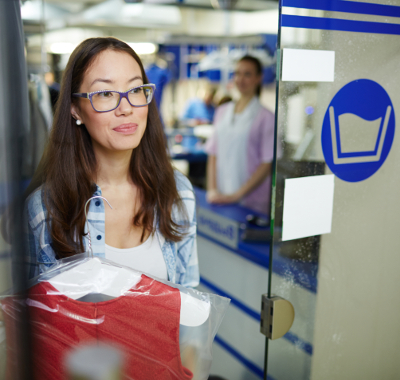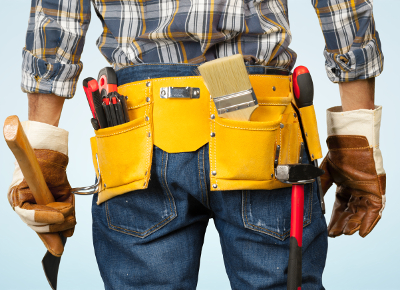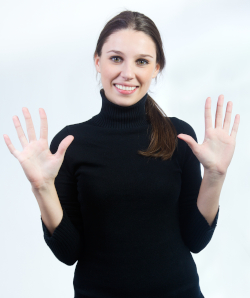What’s Going On???
That’s the question everyone in the industry is asking. You may wish we could sit down in a room with others and get opinions about the state of the industry and where it might be headed, but we can’t do that right now. So, I picked up the phone this week and called around to various industry leaders. In order to get their most honest comments, I told them nothing would be attributed to any individual in the article. The conversations were fascinating!
Dry Cleaning Now
Everybody agreed that dry cleaning as a service is really hurting right now. Initially, there was hope that being designated as an “essential service” would mean business would continue to flow. The reality is that being “essential” and being “used” are not the same thing. As customers went into lock-down and worked from home, social gatherings were banned and travel restricted, garments that normally required dry cleaning were simply not being worn.

Even cleaners have seen changes in their own behavior. “My wife and I were scheduled to have a holiday overseas in October. That was all cancelled. So we bought a big screen TV instead. Lots of people are doing things like that to make up for not being able to have a normal life,” one said.
The grim predictions from our experts were that perhaps only 60% of dry cleaners in business today will survive the Covid-19 pandemic situation. The Dry Cleaning and Laundry Institute’s Jon Meijer has been quoted putting the drop-out rate between 25% and 30%. Obviously, either prediction is sobering.
Who is surviving?
Those who depended on dry cleaning alone have had a rough time. Operators who had a more balanced customer base, on the other hand, have been able to pick up business in other areas.

For instance, one company said that rugs have saved them. When I asked if they think it’s a function of people staying home and getting a good look at their rugs these days, this expert said that’s partly it. But also, people are not traveling or going out to dine or incurring other entertainment expenses. They have more disposable income right now because of that, and are using the time to catch up on home chores like rug and drape cleaning that were not even on the radar before.
Another sideline one company cited is working with big brands on restoring goods damaged in shipping. It is not unusal for an entire container of high-end coats or boots or other items to sustain water damage, mildew or other situations in transit. They have to be cleaned and restored before they can be shipped to retail locations for sale. It’s not a common customer base, but it’s steady.
Operators have been juggling expenses in order to keep the doors open. One operator said their company used everyone’s holidays to keep them employed, and they didn’t have to resort to taking government money. Others have put staff on hold against the day things are better.
Laundry struggles

As the demand for sanitized items grew with the pandemic, it would make sense that laundries are going like crazy, but that’s only part of their business model. Many depend on the hospitality industry, and that aspect of society completely dried up over night. Restraurants closed, so no napkins and table cloths. Hotels were off limits, so no more sheets, blankets, towels and other items were flowing to laundries. Many care facilities had to take or keep their laundry in-house due to Covid concerns.
Some areas are beginning to come back. For instance, one expert cited the resort area of northern Ontario, which opened up when restrictions eased late this summer, and people flooded there to have some kind of vacation. It’s a whole new game in the field of travel. As one person said, “Who would have thought a pandemic would be a great thing for RV (recreational vehicle) sales?”
What about equipment?
Mechanics are busy, busy. If you’ve tried to get something serviced, you may be encountering the same thing. The closure of the border between Canada and the U.S. posed challenges for many companies that regularly travel between the two in order to service client equipment. Initially that meant lots of lost business. But since mechanics were going in both directions, those in Canada who used U.S. companies for their maintenance turned to Canadian mechanics, and vice versa. Since it’s unclear when the border may open again, this will continue to be a challenge.

Down time is a good time to get everything up to speed for later, and many operators are doing that. Parts departments are active as companies opt to improve and repair, rather than invest in new equipment at this time.
Sanitizing is driving sales in equipment. One supplier said he’s had more questions about barrier washers (which are embedded in a wall to separate clean loading from dirty unloading sides) than ever before. This is becoming a standard in Europe, but is taking hold here, too. With questions about pandemic issues, it has moved to top-of-mind for some operators.
Care facilities discovered that they were not able to sanitize to the levels mandated by the government, and they recieved an influx of cash to help with equipment upgrades. It didn’t cover it all, but has driven sales of new equipment in recent months.
As hospitality changes into regional travel instead of national or international, it is expected that some resort areas will be busier than ever, and will require new equipment to keep up with demands. The opening of society again will lead to more use of hotels and other facilities, and right now some are back as much as 50%. Managers will tell you, though, that it takes at least 60-65% capacity to break even, so they have a long way to go to become profitable again, and even further to make up for the past 6 months of closures.
What’s ahead?

It’s becoming clear that this is not a temporary situation, and has fundamentally changed our way of life. 50% of Fortune 500 CEOs say business travel will never be the same. Period. And that has ramifications for many aspects of the economy. It’s going to be a different society that we adjust to after this. Think of the things that have not just become popular (like home baking) but seemingly necessary:
- Social distancing
- Personal Protective Equipment
- Small gatherings
- Home entertainment (indoor and outdoor) rather than public
- Home fitness gadgets like Mirror or Peloton, etc.
- Uber Eats and curbside restaurant pick up
- Home delivery of almost anything
- Zoom for everything from business meetings to weddings
There is an undercurrent of fear (or at least caution) in society that wasn’t present a year ago. As pandemic numbers flatten and then surge again, uncertainty is rampant. This has an effect on business, but also opens doors to new ideas, technologies and business models.
Laundry still has to be done. People still want to be free from tiresome chores — whether they are home all day or not. And that is where smart operators are focusing.
Those who put their minds to finding the next opportunity to meet consumer needs for service, safety and convenience will be in the percentage of companies that not only survive this immediate crisis, but are positioned to take the next one in stride. And the next.
Comment on this article below — Let us know what you are doing to get through and move ahead.






